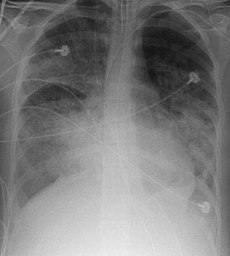In a multicentre study in France, adult patients expected to stay in the intensive care unit for more than 3 days who had suspected bacterial infections were randomised to have antibiotics started or stopped based on predefined cut-off ranges of procalcitonin concentrations (n=307 patients) or to receive antibiotics according to present guidelines (control, n=314). Patients in the procalcitonin group had significantly more days without antibiotics than did those in the control group (14∙3 days [SD 9·1] vs 11∙6 days [SD 8∙2]; absolute difference 2∙7 days, 95% CI 1∙4 to 4∙1, p<0∙0001) without a difference in 28-day or 60-day mortality or ICU length of stay. An editorial points out that as an open-label trial, a treatment bias might have occurred because physicians were aware that their patients had had procalcitonin measurements taken, raising the question as to whether the procalcitonin concentrations themselves or simply the act of measuring procalcitonin led to the recorded reduction in antibiotic use.
The study used the following guidelines for starting, continuing, or stopping of antibiotics according to procalcitonin concentrations:
Guidelines for starting of antibiotics – Excludes situations requiring immediate antibiotic treatment (eg, septic shock, purulent meningitis)
- Concentration <0·25 μg/L – Antibiotics strongly discouraged
- Concentration ≥0·25 and <0·5 μg/L – Antibiotics discouraged
- Concentration ≥0·5 and <1 μg/L – Antibiotics encouraged
- Concentration ≥1 μg/L – Antibiotics strongly encouraged
If blood sample taken for calculation of procalcitonin concentration at early stage of episode, obtain a second procalcitonin concentration 6–12 h later
Guidelines for continuing or stopping of antibiotics
- Concentration <0·25 μg/L – Stopping of antibiotics strongly encouraged
- Decrease by ≥80% from peak concentration, or concentration ≥0·25 and <0·5 μg/L – Stopping of antibiotics encouraged
- Decrease by <80% from peak concentration, and concentration ≥0·5 μg/L – Continuing of antibiotics encouraged
- Increase of concentration compared with peak concentration and concentration ≥0·5 μg/L – Changing of antibiotics strongly encouraged
Use of procalcitonin to reduce patients’ exposure to antibiotics in intensive care units (PRORATA trial): a multicentre randomised controlled trial
Lancet. 2010 Feb 6;375(9713):463-74


